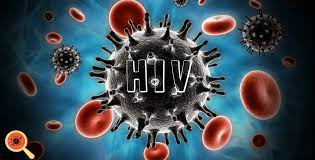
The human immunodeficiency virus (HIV) is a retrovirus, a type of virus that, like many others, stores its genetic information as RNA and not as DNA (most other living things use DNA). HIV infections can be caused by one or more retroviruses, HIV-1 or HIV-2. HIV-1 causes the majority of HIV infections worldwide, but HIV-2 causes many HIV infections in West Africa.
HIV progressively destroys specific white blood cells called CD4 + lymphocytes. Lymphocytes help to defend the body against foreign cells, infectious organisms, and cancer. Thus, when HIV destroys CD4 + lymphocytes, people are vulnerable to attack by many other infectious organisms. Many of the HIV infection complications, including death, are usually the result of other infections, not HIV infection directly.
AIDS is the gravest form of HIV infection. HIV infection is considered AIDS when it develops at least one disease as a significant complication or the number (count) of CD4 + lymphocytes decreases substantially. AIDS is diagnosed when people who have been infected with HIV develop certain diseases. These diseases, called AIDS-defining diseases, include:
* Dangerous infections that occur mainly in people with weakened immune systems (called opportunistic infections), including yeast infections and severe herpes simplex infections;
* Certain cancer types, such as invasive cervical cancer, Kaposi's sarcoma, and certain lymphomas;
* Nervous system dysfunction;
* Substantial weight loss due to HIV infection (AIDS consumption).
HIV transmission requires contact with body fluids that contain the virus or cells infected with the virus. HIV can appear in almost any body fluid, but its transmission occurs mainly through blood, semen, vaginal fluids, and breast milk. Although tears, urine, and saliva can contain low concentrations of HIV, transmission by these fluids is extremely rare if it occurs.
HIV is not transmitted by casual contact (such as touching, holding the person, or by a dry kiss) or by close, non-sexual contact at work, school, or home.
HIV is normally transmitted to others in the following ways:
* By sexual contact with an infected person;
* Injection of contaminated blood can occur when needles are shared or a healthcare professional is accidentally pricked with an HIV-contaminated needle;
* By transmission from an infected mother to her child, either before, during, or after delivery via breast milk;
* Medical procedures, such as blood transfusion containing HIV, procedures performed with inadequately sterilized instruments, or transplantation of an infected organ or tissue.
HIV is more likely to be transmitted if the skin or a mucous membrane is lacerated or damaged, even if minimally.
When initially infected, many people have no observable symptoms. Within one to four weeks, fever, rashes, sore throat, swollen lymph nodes, tiredness, and a range of less common symptoms may appear in some people. Initial symptoms (primary) HIV infection usually lasts three to fourteen days. Some people lose weight progressively and have low fever and diarrhea.
Early diagnosis of HIV infection is crucial, as it enables early treatment. Treatment allows infected people to live longer, be healthier, and less likely to transmit HIV to others. AIDS is diagnosed when the CD4 count drops below 200 cells per microliter of blood or when extreme cachexia occurs or certain severe opportunistic infections or cancer development.
Currently, there is no effective HIV vaccine to prevent HIV infection or slow the progression of AIDS in people who are already infected. However, treating people who have HIV infection reduces the risk they will transmit the infection to others.
Treatment cannot eliminate the virus from the body, although the level of HIV often decreases so much that it is not possible to detect it in the blood or other fluids or tissues. The goals of treatment are:
* Reduce HIV to an undetectable level
* Restore CD4 count to normal
If treatment stops, the level of HIV increases, and the CD4 count starts to drop. Therefore, people need to take antiretroviral drugs for life.
Taking medication as instructed for the rest of your life requires a lot of effort. Some people skip doses or stop taking their medication for a while (called a medicine vacation). These practices are dangerous because they allow HIV to develop resistance to medicine;
In general, HIV infection does not directly cause death. Instead, HIV infection results in substantial weight loss, opportunistic infections, cancers, and other disorders that, in turn, lead to death. A cure was considered impossible, but intensive research on eradicating alternative, all latent HIV from infected people continues.